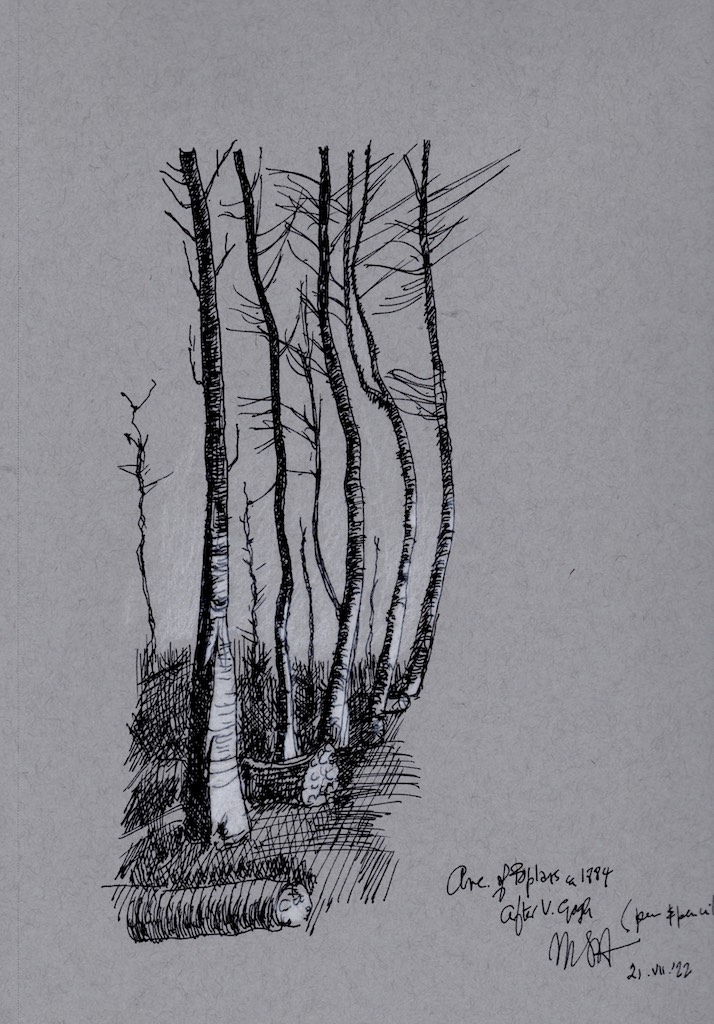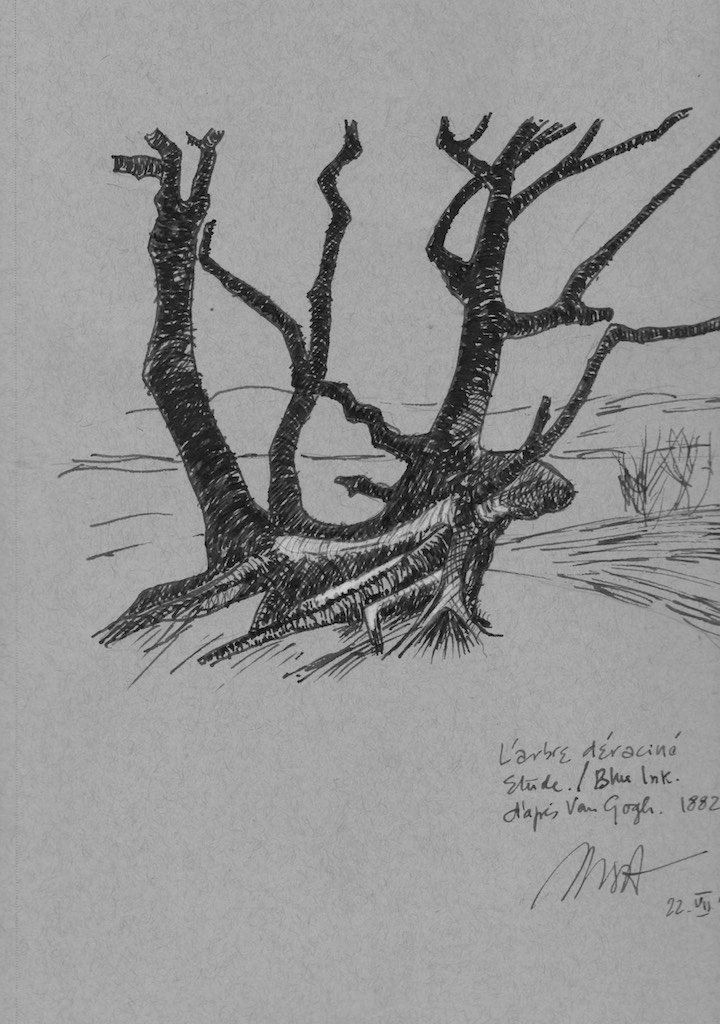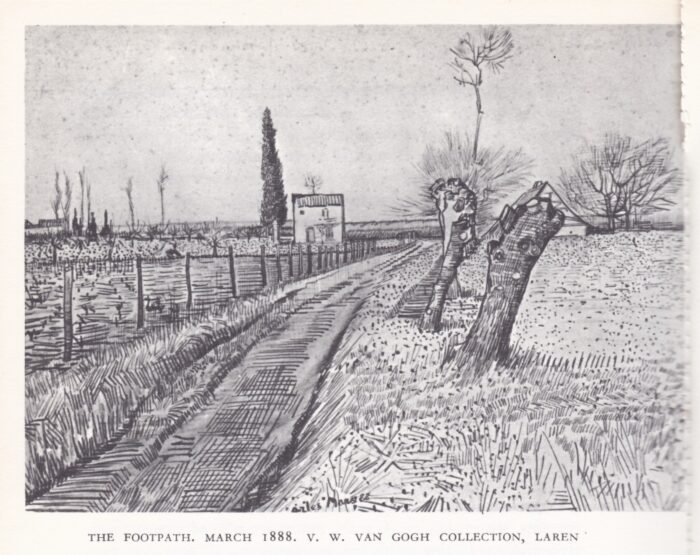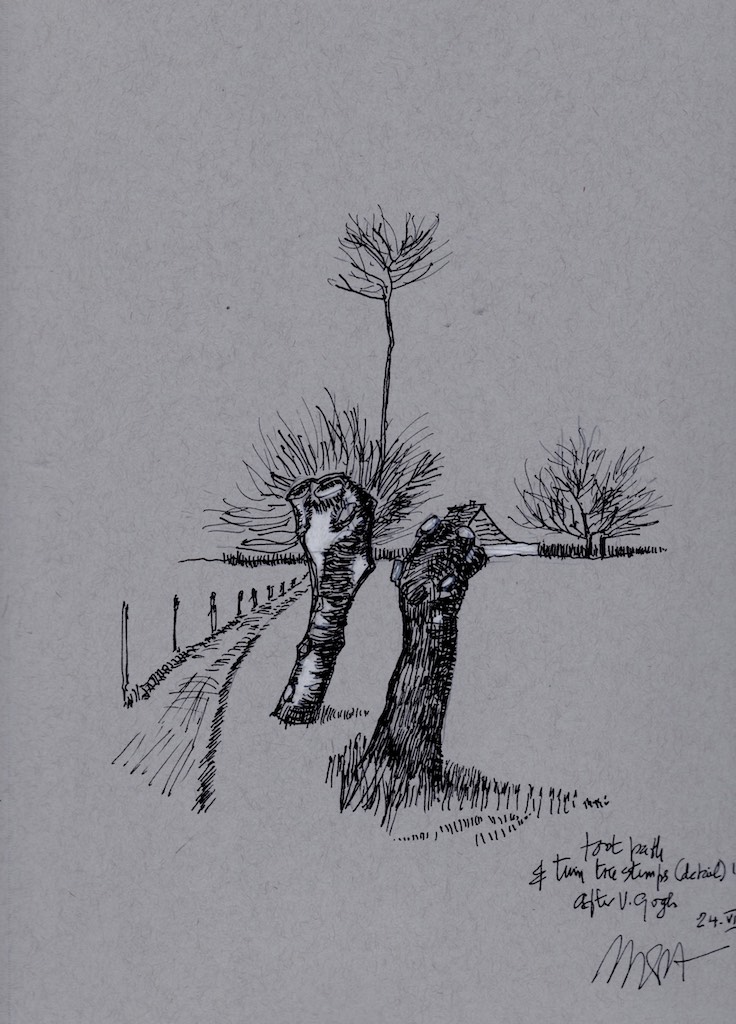Vincent Van Gogh’s paintings, well known for their colourful and convoluted renditions of people and places were accompanied by equivalently striking drawings that can now be considered as so many studies, particularly of trees, expressive of the human condition lived as shared destiny.
In my interpretations of the following three original drawings by Van Gogh, I have tried to focus on the elements that speak to me clearly of that expression.
The row of poplars
Original

Interpretation

The original drawing is of two rows of poplars, one on each side of a country road. Check the dead branches bundles at the foot of each tree; ready to be picked up by the women of the village to heat their stoves and their modest shacks … a humanizing detail of the trees own destiny, Vincent would not miss, and that is why I chose to keep them in my drawing.
Study of trees
Original

Interpretation

Shorn of its smaller branches by the same windstorm that partially uprooted it, the roots of this multi-trunked tree are now visible, resembling fingers digging-in … as Vincent’s did to fight his demons through his art.
The footpath
Original

Interpretation

Can you imagine a more desolate image than these two beheaded tree stumps in the middle of a harvested field belonging, most likely, to the farm house shown on the far side of the field? Let us call them, brothers in misfortune, seemingly leaning for help and rebirth, as a way to shared destiny.
Credits
– The original sketches of Van Gogh, reproduced here in original and interpretation form, were found in Frank Elgar’s Van Gogh, published by Thames and Hudson in 1966, London, England.
– All pen and ink sketches in this post were done by the author on toned gray sketch paper.
